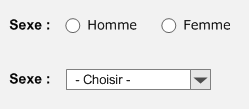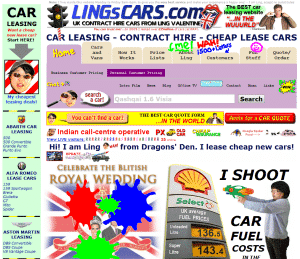How visitors judge your site: 6 factors related to intuition and emotions
Investing more time on a site is a decision. A decision that we make several times a day. However, this decision would be essentially dictated by our emotions.
THE ROLE OF INTUITION AND EMOTIONS
How often do you weigh the pros and cons before making a decision? Almost never, right?
Conscious reasoning is very slow compared to intuition, which explains why, very often, a few seconds are enough to decide whether a site interests us or not.
THE EMOTIONAL BRAIN INVOLVED
Neuropsychology researchers have realized that emotions are essential in decision making. Indeed, when a small region of the brain linking the emotional part to the rational part (the orbitofrontal cortex) of an individual is damaged, he is unable to make simple decisions of daily life, such as choosing between two put in a restaurant. (How we decide, 2010). For these individuals, relevant emotional memories fail to guide the decision.
Past experiences therefore play a fundamental role in intuitive decision-making.
As when having to choose between two dishes in a restaurant, an Internet user who finds himself facing a site appeals to his emotions to form an opinion.
For example, if a user comes across a site with a font that is too small, they get frustrated and leave the site. Over the repetitions, this negative emotion will be associated with all sites with a font that is too small.
- the site causes confusion (so the Internet user does not know where to click),
- the site offends our sense of aesthetics,
- the site does not look professional,
- the contrast is too low,
- there are too many ads
Do you want more, here are 25.
FACTORS THAT GENERATE POSITIVE EMOTIONS
Web ergonomics is, in a way, the art of creating sites that generate positive emotions and minimize displeasure.
Here are some factors supporting this objective:
1. La simplicité
 Simplicity is one of the best ways to produce positive emotions.
Simplicity is one of the best ways to produce positive emotions.
This is also the purpose of software assistants (wizard). They guide us in a linear, step-by-step fashion, reducing the impression of complexity.
Steve Krug expresses the concept of simplicity with his famous slogan "Don't make me think". In English: don't make me think, show me the way.
2. PROGRESSIVE DISCOVERY OF FEATURES
On the other hand, the lack of functionalities could lead a user to look elsewhere.
With the iPhone interface, Apple may have managed to reconcile the need for simplicity and functionality. Indeed, on the iPhone, many features are not immediately apparent. We only discover them gradually, a little by chance. For example, on the iPhone, you can write a period (.) by pressing the spacebar twice in a row.
3. SPEED
Of course, ensuring pages load quickly makes a difference. Avoiding unnecessary clicks is also a good way to save users time. For example, in a form where you have to choose between two possibilities, "male" or "female", it is better to use radio buttons rather than a drop-down menu. In this way, the user is spared a click.
Avoiding unnecessary clicks is also a good way to save users time. For example, in a form where you have to choose between two possibilities, "male" or "female", it is better to use radio buttons rather than a drop-down menu. In this way, the user is spared a click.
4. WORDING AND ORGANIZATION OF ELEMENTS
The information architecture aims precisely to correctly group and name the contents and the functionalities, thus facilitating the understanding of the user.
5. READABILITY
An inappropriate font or inappropriate line spacing can make reading and understanding a text more difficult, and therefore generate frustration.
The same is true for syntax and style. Better constructed or shorter sentences are more pleasant to read, and save us unnecessary proofreading.
6. BEAUTY, AESTHETICS
This factor is controversial. Some are of the opinion that beauty is relative, or that it is not necessary. A co-worker recently quipped, “Is Facebook beautiful? ". Rightly so, Facebook is neither beautiful nor ugly. Facebook wisely leaves plenty of room for content.
Beauty may be summed up in the harmony of colors and proportions. For example, a study has shown that the appearance of logos is decisive when it comes time to choose an iOS application in the App Store.
Conclusion
Fortunately, the web is a meritocracy. Bad sites should therefore logically disappear one day or another, or at least lose their position on Google.

-2.png)






